M
I
C
R
O
S
T
O
R
Y
O
F
A
R
T
........................................................
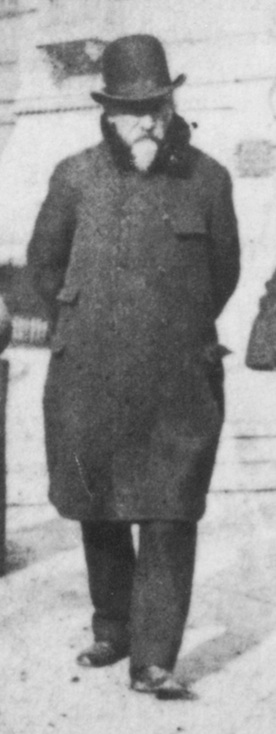
NOW COMPLETED:
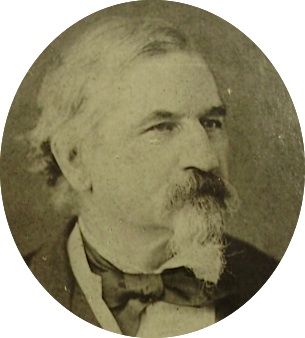
........................................................
MICROSTORY OF ART
ONLINE JOURNAL FOR ART, CONNOISSEURSHIP
AND CULTURAL JOURNALISM
........................................................
INDEX | PINBOARD | MICROSTORIES |
FEATURES | SPECIAL EDITIONS |
HISTORY AND THEORY OF ATTRIBUTION |
ETHNOGRAPHY OF CONNOISSEURSHIP |
SEARCH
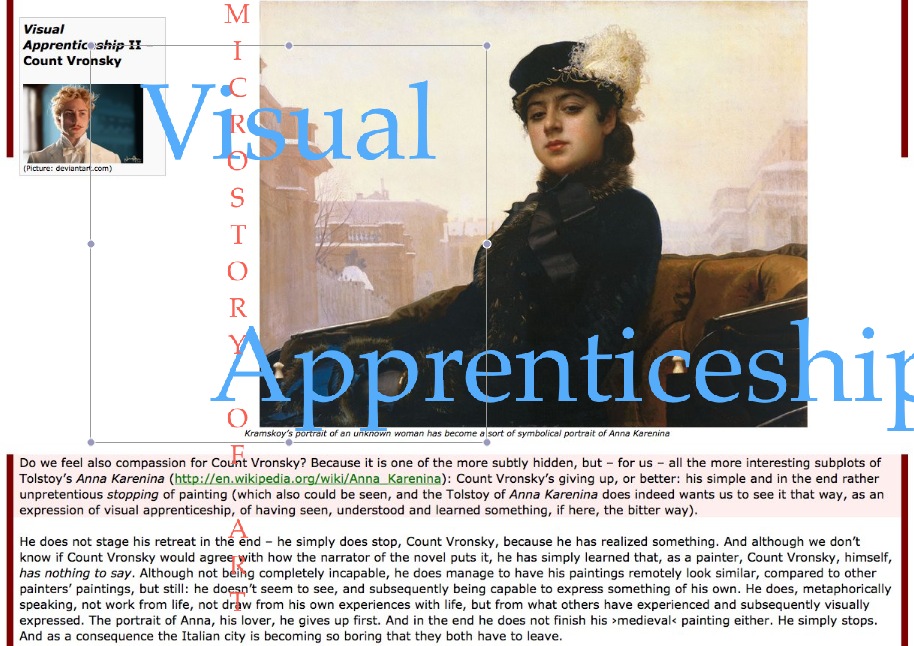
........................................................

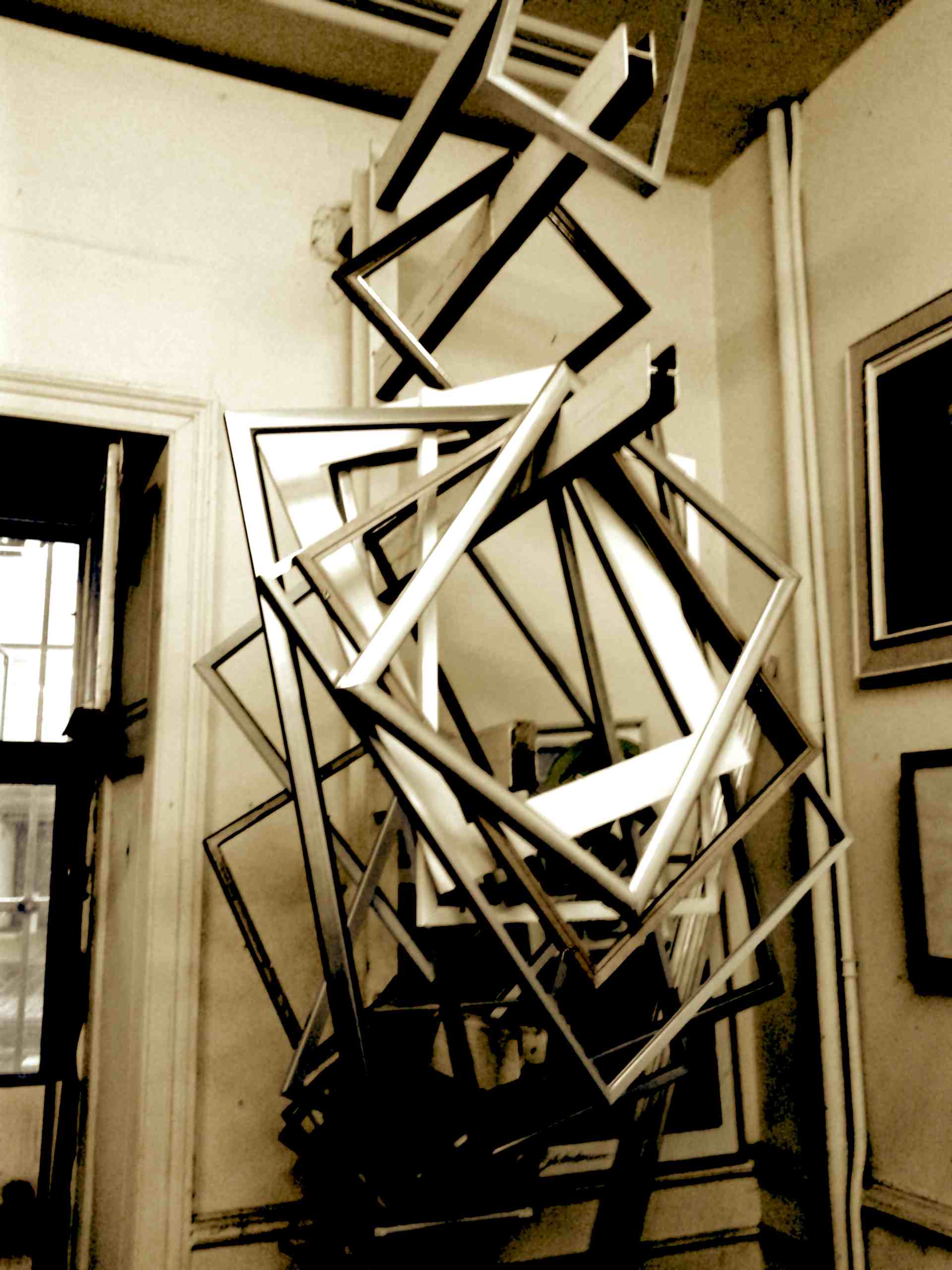
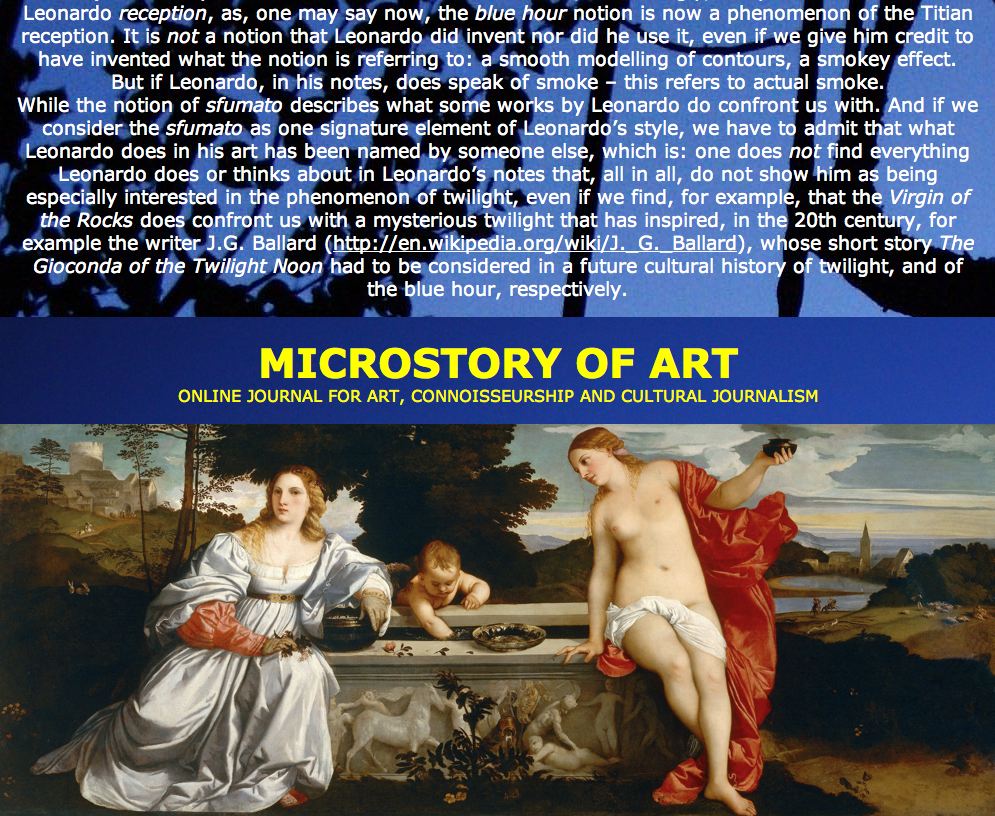
 >MICROSTORIES
>MICROSTORIES
- Richard Serra
- Martin Scorsese
- Claude Simon
- Sunshine
- Werner Herzog
- The Creation
- Marcel Duchamp
- Nino Rota
- Wölfflin and Woolf
- Hansjörg Schneider
- Kraftort Arkadien
- Visual Biography
- Schlaraffenleben
- Die Geisteswissenschaften
- The Voyeur
- Buzzword Sustainability
- Paul Verlaine
- Tao Yuanming
- New Beginning
- Seneca
- Still Lifes
- Charles Baudelaire
- Frédéric Chopin
- The Art History of Sustainability
- Wang Wei
- Solarpunk
- Historians of Light
- Lepanto
- Renaturalization
- Plates
- Snow in Provence
- Learning to See
- Picasso Dictionaries
- Peach Blossom Spring
- Picasso Tourism
- Tipping Points
- Sviatoslav Richter
- Weather Reports
- Treasure Hunt
- Another Snowscape in Picasso
- Picasso in 2023
- Dragon Veins
- The Gloomy Day
- The Art of the Pentimento
- Reforestation
- The Status of Painting
- Emergency Supply
- Punctuality
- Watching Traffic
- Zhong Kui
- How Painting Survived the 1990s
- Confirmation Bias
- Sustainability and Luxury
- Garage Bands
- Picasso and Artificial Intelligence
- Eyes of Tomorrow
- Picasso in 2023 2
- Gluing Oneself to Something
- Suburbia
- Bamboo
- Sustainability and Carpe Diem 1
- Interviews with Bruegel
- Sustainability and Carpe Diem 2
- Coffee & Sugar
- Bamboo 2
- Picasso in 2023 3
- Sustainability and Carpe Diem 3
- Cherry Orchard
- Old Magazines
- Chance
- Nick Drake
- Harlequin
- The Smartphone & the Art Book
- Atlas Syndrome
- The Kitchen
- Atlas Syndrome 2
- Consideration
- Tori Amos
- School
- Orchard Auctioning Day
- The Hundred Years’ War
- Sócrates
- Chameleon
- Nefertiti Bust
- Picasso as a Computer
- Sunflowers
- Philemon & Baucis
- Ode to the Radio
- Childhood
- Wimmelbild
- Restitution
- Nick Drake 2
- Wishful Thinking
- Sundays
- The Independent Scholar
- September
- The Fisherman by Pirosmani
- Microadventure
- Sociology
- Salvator Mundi
- Chillon
- Appassionata
- Amber
- Homer
- Berlin
- Planet Walk
- Improvisation
- Seeing Picasso
- These Nice Kids
- Robber
- The One
- The Sea Turtle
- Zoo
- Through the Hush
- Wunderkammer
- I Do Not Seek, I Find
- Shopping Mall
- Food Hamper
- The Secretary
- This Gate
- Nor Rainy Day
- House on a Hill
- Beautiful Island
- Second-hand Bookstore
- Flat
- Slap in the Face
- Serra, Wenkenpark
- Apologies
- The Bells
- Nordmann Fir
- Picasso Wanting To Be Poor
- Picasso, Pirosmani
- A Brief History of Sculpture
- 24 Sunsets
- Rusty Phoenix
- Glove
- Wintry Stanza
- A Song
- Like A Beatle
- Catching An Orange
- Solar Bees
- Permaculture

 >FEATURES
>FEATURES
- Van Gogh On Connoisseurship
- Two Museum’s Men
- Ende Pintrix and the City in Flames
- Titian, Leonardo and the Blue Hour
- The Man with the Golden Helmet: a documentation
- Un Jury d’admission à l’expertise
- Learning to See in Hitler’s Munich
- Leonardo da Vinci and Switzerland
- The Blue Hour Continued
- The Blue Hour in Louis Malle
- Kafka in the Blue Hour
- Blue Matisse
- Blue Hours of Hamburg and LA
- A Brief History of the Cranberry
- The Other Liberale in the House
- The Blue Hour in Raphael
- Who Did Invent the Blue Hour?
- Monet on Sustainability
- Velázquez and Sustainability
- The Blue Hour in Guillaume Apollinaire
- Van Gogh on Sustainability
- The Blue Hour in Marcel Proust
- Picasso and Sustainability
- The Contemporary Blue Hour
- The Blue Hour in 1492
- The Blue Hour in Hopper and Rothko
- Hopper and Sustainability
- The Blue Hour in Ecotopia
- The Hour Blue in Joan Mitchell
- Explaining the Twilight
- The Twilight of Thaw
- The Blue Hour in Pierre Bonnard
- Explaining the Twilight 2
- Picasso on Stalin
- Rubens on Sustainability
- The Salvator Mundi in Bruegel and Rubens
- The Blue Hour in Leonardo da Vinci and Poussin
- The Blue Hour in Rimbaud
- Faking the Dawn
- Frost and Thaw in Ilya Ehrenburg
- Picasso, Stalin, Beria
- Picasso, Solzhenitsyn and the Gulag
- Shostakovich on Picasso
- Hélène Parmelin in 1956
- Historians of Picasso Blue
- Picasso Travelling to Moscow 1
- The Blue Hour in Caravaggio
- Picasso Travelling to Moscow 2
- Picasso, the Knife Game and the Unsettling in Art
- Some Notes on Leonardo da Vinci and Slavery
- Picasso Moving to the Swiss Goldcoast
- The Blue Hour in Camus
- The Blue Hour in Symbolism and Surrealism
- Caspar David Friedrich in His Element
- Exhibiting the Northern Light
- Caspar David Friedrich in His Element 2
- Robert Schumann and the History of the Nocturne
- The Blue Hour in Robert Schumann
- Caspar David Friedrich and Sustainability
- The Twilight of Thaw 2
- Multicultural Twilight
- The Blue Hour in Anton Chekhov
- The Blue Hour in Medieval Art
- Twilight Photography
- The Blue Hour in Bob Dylan
- Iconography of Optimism

 >SPECIAL EDITIONS
>SPECIAL EDITIONS
- Visions of Cosmopolis
- Mona Lisa Landscapes
- Turner and Ruskin at Rheinfelden
- Painters On TV & On TV
- Spazzacamini in Art
- A Last Glance at Le Jardin de Daubigny
- The Experimental Cicerone
- A Dictionary of Imaginary Art Historical Works
- Iconography of Blogging
- Begegnung auf dem Münsterplatz
- Cecom
- Das Projekt Visual Apprenticeship
- Those Who See More
- A Fox on Seeing with the Heart
- Sammlung Werner Weisbach
- Daubigny Revisited
- Some Salvator Mundi Microstories
- Some Salvator Mundi Afterthougths
- Some Salvator Mundi Variations
- Some Salvator Mundi Revisions
- A Salvator Mundi Questionnaire
- A Salvator Mundi Puzzle
- Unknown Melzi
- Francis I and the Crown of Charlemagne
- From Amboise to Fontainebleau
- Drones Above Chambord
- Looking Back At Conques
- Flaubert At Fontainebleau
- Images of Imperial Ideology
- The Chronicles of Santa Maria delle Grazie
- Seeing Right Through Someone
- Melzi the Secretary
- Eying Glass
- A Foil to the Mona Lisa
- A Renaissance of the Cartoon
- Sketching a Family Tree
- Venetian Variations
- A Brief History of Digital Restoring
- A Consortium of Painters
- Leonardeschi and Landscape
- A Christ in Profile
- Learning to See in Spanish Milan
- A History of Gestures
- Leonardo and Josquin
- A Renaissance of the Hybrid
- Suida and Heydenreich
- The Watershed
- Three Veils
- From Beginning to End
- Connoisseurship of AI
- Twilight and Enlightenment
- The Blue Hour in Chinese Painting
- Dusk and Dawn at La Californie
- Iconography of Sustainability
- The Blue Hour in Goethe and Stendhal
- The Sky in Verlaine
- The Blue Hour in Paul Klee
- Iconography of Sustainability 2
- The Blue Hour in Charles Baudelaire
- From Bruegel to Solarpunk
- Some Salvator Mundi Documentaries
- Some More Salvator Mundi Monkey Business
- The Windsor Sleeve
- Brigitte Bardot’s Encounter with Picasso
- Art Historians and Historians
- A Salvator Mundi Chronicle
- The Salvator Mundi and the French Revolution
- The Fontainebleau Group
- The Encounter of Harry Truman with Pablo Picasso
- The Fontainebleau Group Continued
- The Windsor Sleeve Continued
- The Salvator Mundi in Early Netherlandish Painting 1
- Some Salvator Mundi Resources
- A New Salvator Mundi Questionnaire
- The Woman in Picasso
- The Yarborough Group
- Melzi, Figino and the Mona Lisa
- The Yarborough Group Continued
- A Salvator Mundi Global History
- The Salvator Mundi in Medieval Art
- The Salvator Mundi in Medieval Art 2
- The Salvator Mundi in Early Netherlandish Painting 2


 >HISTORY AND THEORY OF ATTRIBUTION
>HISTORY AND THEORY OF ATTRIBUTION
- The Mysterious »Donna Laura Minghetti-Leonardo«
- Assorted Demons of Connoisseurship
- Panofsky Meets Morelli
- Discovering the Eye of Sherlock Holmes
- Handling the Left-handed Hatchings Argument
- Visual History of Connoisseurship
- Alexander Perrig
- Connoisseurship in 2666
- What Postmodernity Has Done to Connoisseurship
- Dividing Four Fab Hands
- A Leonardesque Ambassador
- Test Cases in Connoisseurship
- A Raphael Expertise
- How to Tell Titian from Giorgione
- Louise Richter
- The Unique Property in the History of Connoisseurship
- An Expertise by Berenson
- The Book of Expertises
- An Album of Expertises
- An Expertise by Friedländer
- A Salvator Mundi Provenance
- How to Tell Leonardo from Luini
- An Expertise by Crowe and Cavalcaselle
- An Expertise by Bayersdorfer
- An Expertise by Hermann Voss
- An Expertise by Hofstede de Groot
- Leonardeschi Gold Rush
- An Unknown »Vermeer«
- An Expertise by Roberto Longhi
- An Expertise by Federico Zeri
- A Salvator Mundi Geography
- A Salvator Mundi Atlas
- The Bias of Superficiality
- 32 Ways of Looking at a Puzzle
- James Cahill versus Zhang Daqian
- Five Fallacies in Attribution
- On Why Art History Cannot Be Outsourced to Art Dealers
- On Why Artificial Intelligence Has No Place in Connoisseurship
- Salvator Mundi Scholarship in 2016
- Leonardo da Vinci at the Courts
- The Story of the Lost Axe
- The Last Bruegel
- A Titian Questionnaire
- On Where and Why the Salvator Mundi Authentication Did Fail
- The Problem of Deattribution

 >ETHNOGRAPHY OF CONNOISSEURSHIP
>ETHNOGRAPHY OF CONNOISSEURSHIP
MICROSTORY OF ART
ONLINE JOURNAL FOR ART, CONNOISSEURSHIP
AND CULTURAL JOURNALISM
........................................................
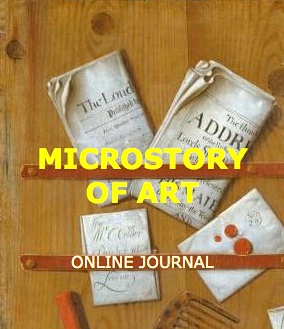
***
ARCHIVE AND FURTHER PROJECTS
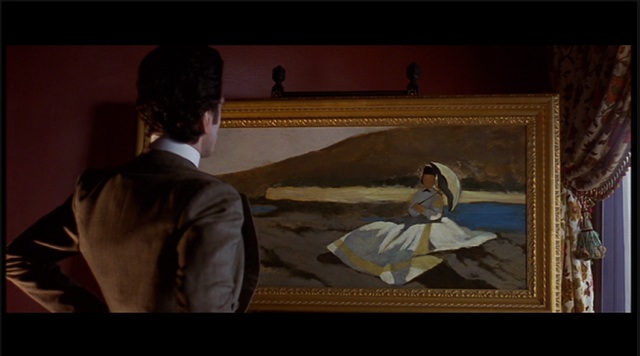
1) PRINT


***
2) E-PRODUCTIONS
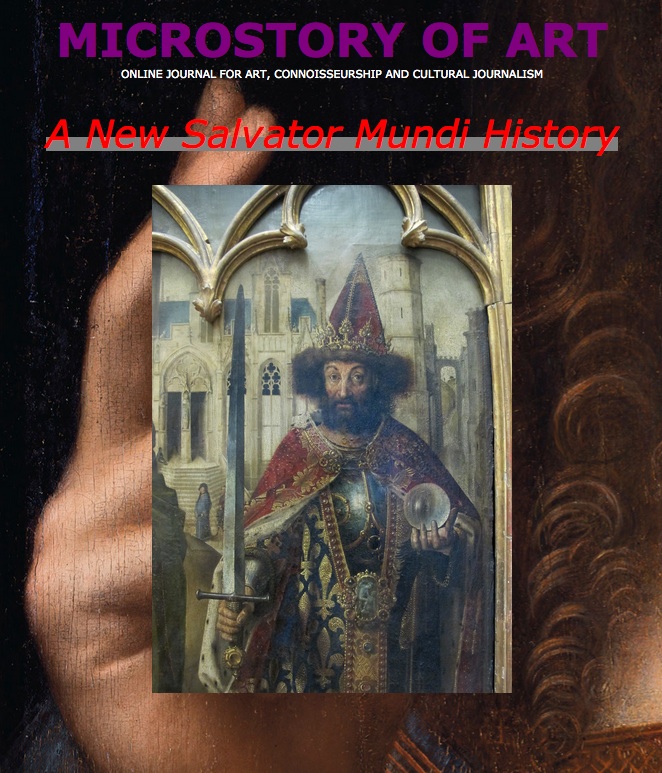
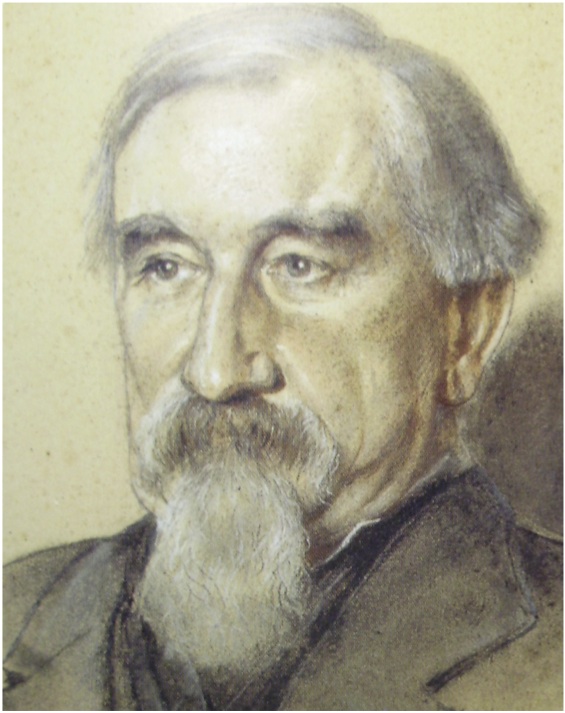
........................................................

........................................................
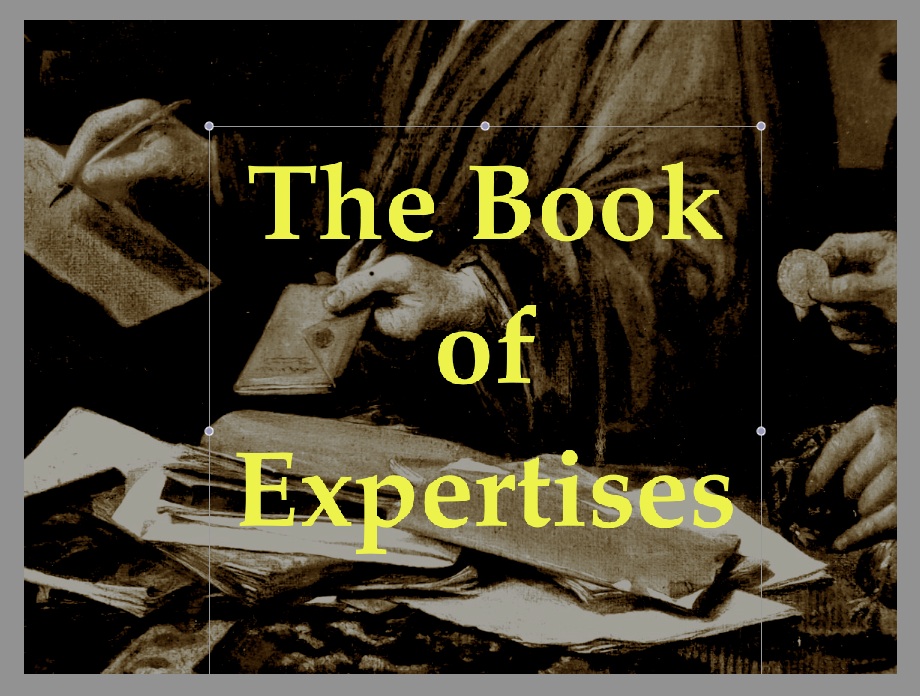
........................................................
FORTHCOMING:
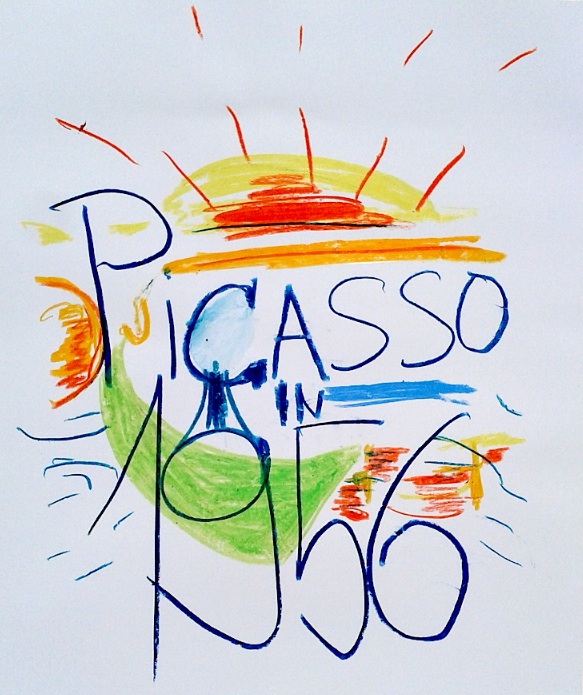

***
3) VARIA

........................................................

........................................................
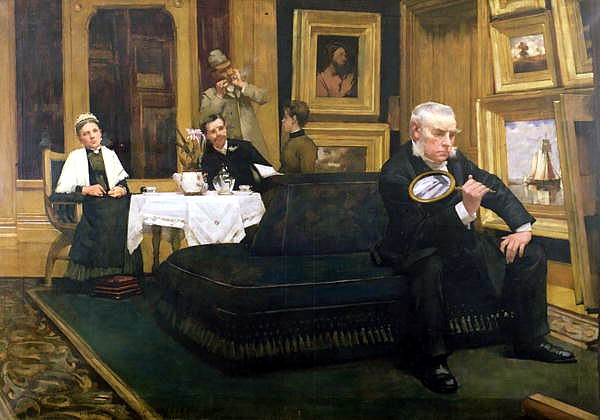
........................................................

........................................................

........................................................
***
THE GIOVANNI MORELLI MONOGRAPH

- The Giovanni Morelli Monograph
........................................................
MICROSTORY OF ART
ONLINE JOURNAL FOR ART, CONNOISSEURSHIP AND CULTURAL JOURNALISM
HOME
| MICROSTORY OF ART ONLINE JOURNAL FOR ART, CONNOISSEURSHIP AND CULTURAL JOURNALISM From Master to\\ Maestro or A rt Connoisseurship’s Journey into the Lan ds of Music, Sounds and Silences |
Since we are talking way too much here, let’s imagine a silenced connoisseur, a listener (at least for a while). A traveller heading for the lands of music, sounds and silence(s). With open ears, but also with a curiosity what connoisseurship might be like. Out there, where everything is different (but somehow also familiar).
And the more our traveller listens and the more he hears he finds – that many phenomena out there he seems to know. Like for example the concept of fake.
›Are there musical fakes out there?‹, we might ask our traveller who has just come back, and whom we want to speak out now and tell us about his experiences. ›Tell us‹, we say, in our unsatiable curiosity, ›what did you see?‹
›Oh yes, there are‹, he replies. And if you are curious to know more about Maria Callas fakes, Jimi Hendrix-cover bands or a fake Schubert symphony be welcome to our readership. And hear also what our ethnographic traveller has to say on the more general phenomena as for example recognizing, knowing, attribution and yes, appreciation, to be found in both these worlds, the connoisseurship of art, and the connoisseurship of music, sounds and silences (picture above: pastemagazine.com).
Berliner Tante:
Fake provenance of fake source material for a fake Schubert symphony in E-major by Gunter Elsholz (is it by the way true that Schubert hated the key of E-major?).
PS 1: Some sources, by the way, have ›uncle‹ instead of ›aunt‹ (Tante), respectively ›grandfather‹, respectively ›Berlin branch of family‹.
PS 2: As to ›fake‹ we follow here the view of Schubert-scholar Walther Dürr (http://de.wikipedia.org/wiki/Walther_Dürr).

(Picture: telegraph.co.uk)
Blind Date:
Here referring to a section in German musical magazine Musikexpress/Sounds (now: Musikexpress; http://de.wikipedia.org/wiki/Musikexpress) where musicians have to identify and to comment upon songs they are confronted with. See also: ›Kraftwerk‹, below, and compare ›Diskothek im Zwei‹, respectively ›Horowitz, Vladimir‹, below.
Boasting:
Pretending of being able to recognize what is being played, by which orchestra and directed by whom (even if played backwards, and only the last orchestra hit resounds). Or: Pretending of being able to tell who’s soloing, on what guitar and assisted by what type of amplifier and what effect devices (slowing down the tape might, by the way, help).
Diskothek im Zwei:
See: ›Horowitz, Vladimir‹, below.
Grout, Jennifer:
Young American singer who displayed her astonishing connoisseurship of Arab music in the broadcasting show Arabs Got Talent (see for example: http://www.nytimes.com/2013/12/04/arts/music/jennifer-grout-sings-umm-kulthum-hits-on-arabs-got-talent.html?_r=0), a competition in which she finished third. The video of her first appearance in the show, alas, seems to be no longer available.
Haydn:
Horowitz, Vladimir:
›This pianist is certainly yet going to be discovered some time‹, a participant once said in the notable Swiss radio DRS 2 (now: SRF 2) programme Diskothek im Zwei (now Diskothek; see: http://www.srf.ch/sendungen/diskothek/sendungsportraet), dedicated to the (blindfolded) discussion and finally identifying of musical work’s alternative recordings. ›This pianist is certainly yet going to be discovered some time‹, the participant said, instead of saying that the recording was by Vladimir Horowitz (http://en.wikipedia.org/wiki/Vladimir_Horowitz), which probably everyone knew anyway, and which resulted in general laughter (because, I imagine, everyone found this an elegant way to put it).
Interpretation:
The one key concepts that probably, at least in some sense, separates art connoisseurship and the connoisseurship of music, since art works, if we don’t consider ›curating‹ as interpreting, do not win their presence, which in most cases might be a material presence, by interpreting. If, however, we would consider interpretation as something guiding perception, we would experience material works of art, in some sense, through interpretation only (in spite of the fact that the material presence of art works is not ›interpreted‹, but ›objective‹). Through interpretation only, as we are experiencing musical works, if we don’t read them and have them only resound within ourselves, by interpreters, having them resound, to be interpreted, to be interpreted by us.
Connoisseurship of music, thus, might focus on textual structures (scores, including ink spots, mistakes, and errors, and thus is related to philology, even if a folksong might never have been noted and might only exist as a musical idea, transmitted from one musician to another), but also on acts of interpretation (representations of texts), recorded interpretations and, one might add, experiences that result from hearing (possibly interacting with what we know, for example of texts or scores or the background of acts of interpretation).
While traditional connoisseurship of art, if we understand by that term for the moment the recognizing of authorship only, usually tends to neglect the taking into account of intellectual dimensions of art works (i.e. interpretation on a level of meaning; as if for example painting actually was music; music lacking or not necessarily demanding an intellectual encounter with a listener/beholder), but at the same time is interpretation of visual (formal) structure (›philology of the eye‹), be it self-reflective interpretation and philology, i.e. scientific connoisseurship, or not.
If we then open-up the range of what the very term connoisseurship means from mere recognizing towards an inside out knowing of something and the disposition and capacity to appreciate this something, especially in its varying shapes, differenciations and slightest distinctions, the connoisseurship of art and of music, of course, ressemble each other, as both fields of human practice and experience reveal a sort of yin/yang structure, wherein the capacity of being able to recognize something is the result of, rests on, and is also deeply intertwined with, the inside out knowing of this something, and the driving force of getting to know something inside out is curiosity and, more than that and maybe in the field of music more than anywhere: passion.

(Picture: wn.com)
Kraftwerk:
»Vince [Clark] (after the first Tüüt): Kraftwerk. Still find them quite good.« (Excerpt from a Musikexpress Blind Date (see above) with Pop band Erasure in 1987, and with Vince Clark (http://en.wikipedia.org/wiki/Vince_Clarke) referring to the 1986 Kraftwerk track Der Telefon-Anruf (http://www.youtube.com/watch?v=uQpbH8iMQDo) ).
More Experience:
Notable Swiss Jimi Hendrix-cover band around singer/guitarplayer Marcel Aeby (see: http://www.youtube.com/watch?v=Ilx5eQiD55I and http://de.wikipedia.org/wiki/More_Experience). My recommendation in case you would ever need an expert (or an expert trio) to tell the differences between authentic Hendrix (recordings, bootlegs etc.) and Hendrix fakes.
Mozart:
According to Wolfgang Hildesheimer (http://en.wikipedia.org/wiki/Wolfgang_Hildesheimer): did prefer to play for connoisseurs.
Recognizing Schubert:
On recognizing the Schubert tone (»He has hardly entered, but it is as if you knew his steps, his very way of opening the door...«) we hear critic Eduard Hanslick (http://en.wikipedia.org/wiki/Eduard_Hanslick), not only with this snippet, but with a longer excerpt of his critic to the Unfinished’s premiere (source: aeiou.at; see also: http://en.wikipedia.org/wiki/Symphony_No._8_%28Schubert%29):
»Wenn nach ein paar einleitenden Tacten Clarinette und Oboe einstimmig ihren süssen Gesang über dem ruhigen Gemurmel der Geigen anstimmen, da kennt auch jedes Kind den Componisten, und der halbunterdrückte Ausruf ›Schubert‹ summt flüsternd durch den Saal. Er ist noch kaum eingetreten, aber es ist, als kennte man ihn am Tritt, an seiner Art, die Thürklinke zu öffnen. Erklingt nun gar auf jenen sehnsüchtigen Mollgesang das contrastierende G-Dur-Thema der Violincelle, ein reizender Liedsatz von fast ländlerartiger Behaglichkeit, da jauchst jede Brust, als stände Er nach langer Entfernung leibhaftig mitten unter uns. Dieser ganze Satz ist ein süsser Melodienstrom, bei aller Kraft und Genialität so krystallhell, daß man jedes Steinchen auf dem Boden sehen kann. Und überall dieselbe Wärme, derselbe gödene, blättertreibende Sonnenschein! Breiter und grösser entfaltet sich das Andante. Töne der Klagen oder Zornes fallen nur vereinzelt in diesen Gesang voll Innigkeit und ruhigen Glückes, mehr effectvolle, musikalische Gewitterwolken, als gefährliche der Leidenschaft. Als könnte er sich nicht trennen von dem eigenen süssen Gesang, schiebt der Componist den Abschluss des Adagios weit, ja allzuweit hinaus. Man kennt diese Eigentümlichkeit Schuberts, die den Totaleindruck mancher seiner Tondichtungen abschwächt.
Auch am Schlusse dieses Andantes scheint sein Flug sich ins Unabsehbare zu verlieren, aber man hört doch immer das Rauschen seiner Flügel.
Bezaubernd ist die Klangschönheit der beiden Sätze. Mit einigen Horngängen, hier und da einem kurzen Clarinett- oder Oboensolo auf der einfachsten, natürlichen Orchester-Grundlage gewinnt Schubert Klangwirkungen, die kein Raffinement der Wagnerschen Instrumentierung erreicht. Wir zählen das neu aufgefundene Symphonie-Fragment von Schubert zu seinen schönsten Instrumentalwerken und sprechen dies hier um so freudiger aus, als wir gegen eine übereifrige Schubert-Pietät und Reliquien-Verehrung mehr als einmal uns ein warnendes Wort erlaubt haben.«
Scheibler, Ludwig:
The one connoisseur of art who left art connoisseurship for musicology (see also: http://www.seybold.ch/Dietrich/DoingJusticeToForgottenConnoisseursAList). Cooperated with Austrian musicologist Otto Erich Deutsch (http://en.wikipedia.org/wiki/Otto_Erich_Deutsch ; http://en.wikipedia.org/wiki/Schubert_Thematic_Catalogue) and thus also contributed to Schubert connoisseurship, respectively philology.
Schubert/Elsholz:
How much Schubert, how much Gunter Elsholz in here (https://www.jpc.de/jpcng/classic/detail/-/art/Franz-Schubert-1797-1828-Symphonie-in-E-1825/hnum/6686121)? (And is, by the way, the cover art also spurious? and what about the liner notes? and what about the term ›reconstruction‹ given by the web site, in comparison to the information given – or spared – by the cover? – all in all, a case for Orson Welles and the F for Fake brigade…).
Silences:
Since silence can be defined only in opposition to sound, every silence is different in relation to its surrounding sounds, and we have to use the plural here. As to the recognition of various types and qualities of silence time distances between actual sound and silence play a role, or, more simply put, what goes on at the margins of silence, respectively of sound.
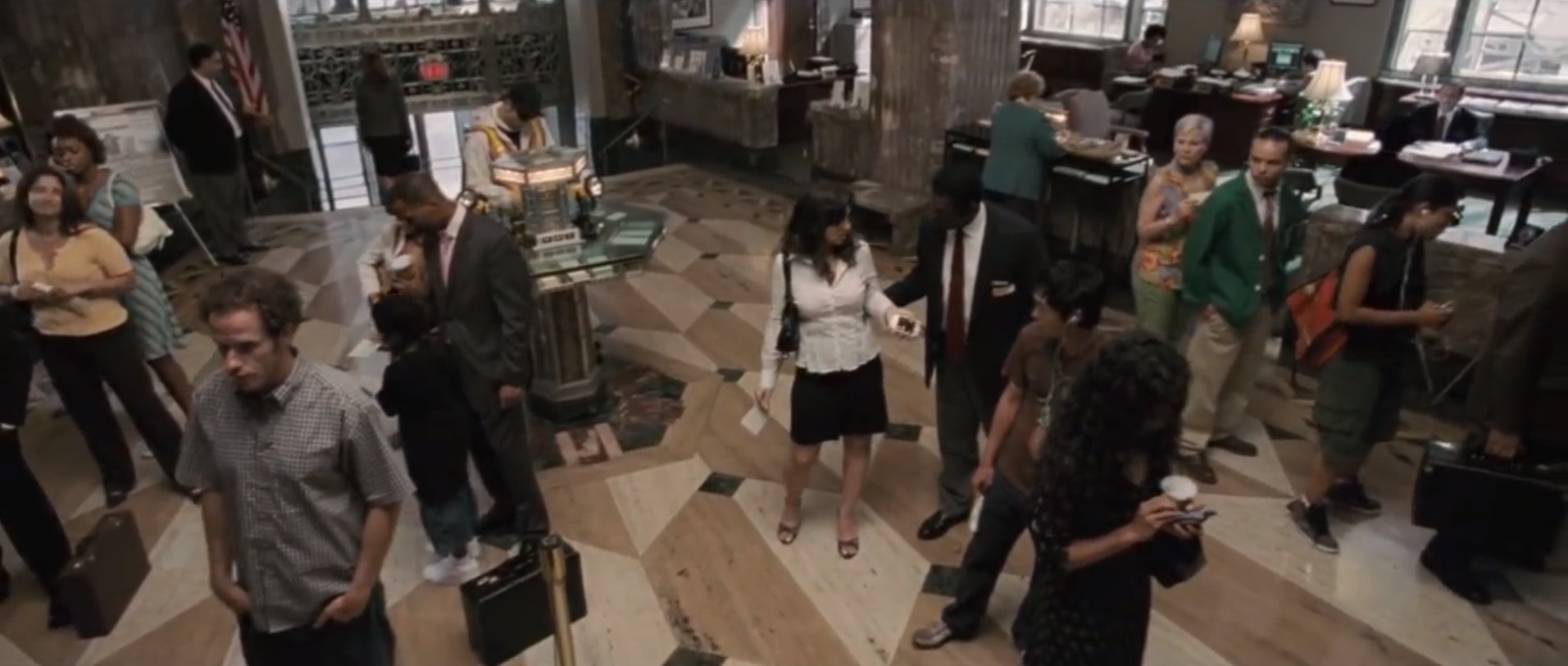
»You’re getting a little… loud on your phone«
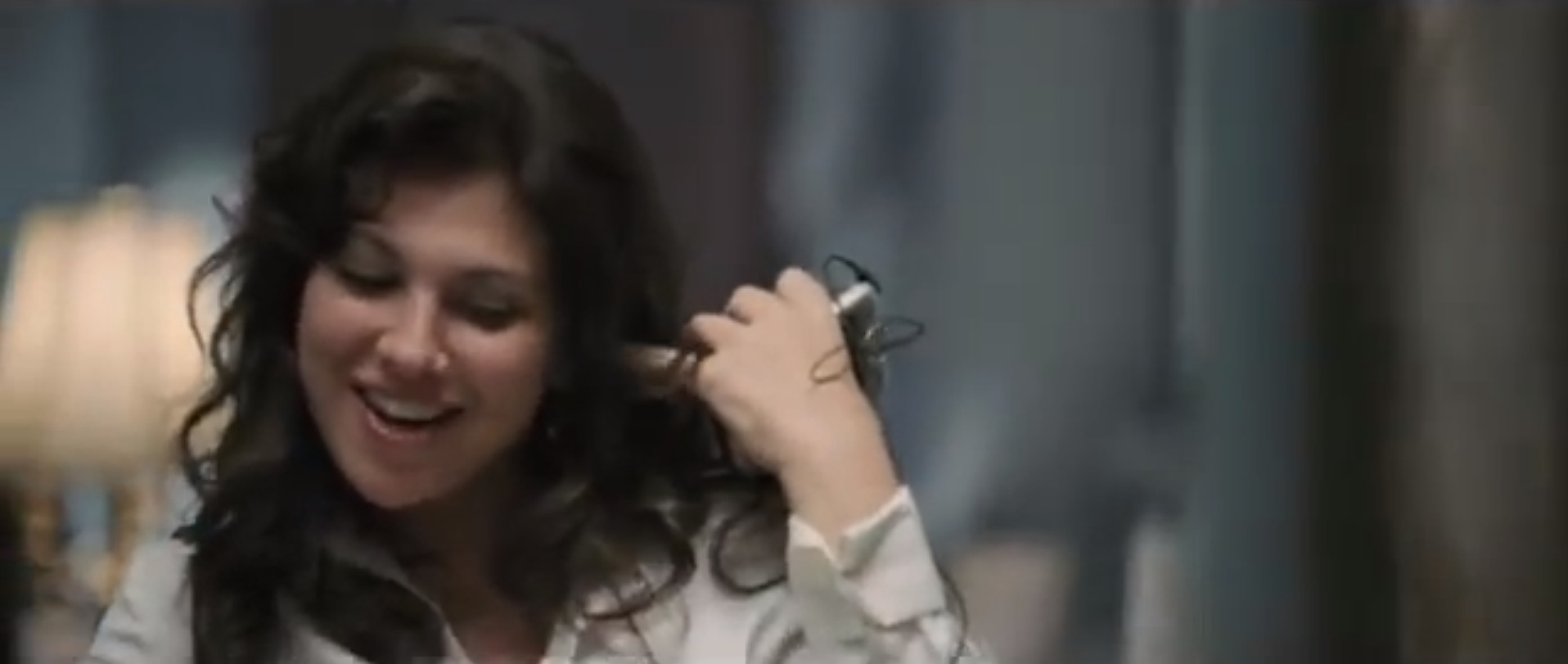
»I did’t know I was in a library. F…g bank…« (pictures: youtube.com/The Inside Man)
Tipp-Ex:
Not in use in Schubert’s time (see also ›Berliner Tante‹ and ›Schubert/Elsholz‹, above). If you come over an allegedly newly discovered Schubert symphony, check it for traces of Tipp-Ex (http://en.wikipedia.org/wiki/Tipp-Ex) or similar substances. In case such traces would be found, this might possibly be interpreted as a clue that Gunter Elsholz was involved (can stylistic criticism possibly also be of help? Compare ›Recognizing Schubert‹, above).
Third Kind:
We know ›authentic‹, and we know ›fake‹. But in music we yet have to take into consideration a third category: ›dictated by dead composer from beyond to medium Rosemary Brown‹ (see: http://en.wikipedia.org/wiki/Rosemary_Brown_%28spiritualist%29).
Williamson, John:
»Die Connaisseurs waren einigermassen verwundert, als Iggy Pop nach dem Tod Ron Ashetons doch noch einmal James Williamson (http://en.wikipedia.org/wiki/James_Williamson_%28musician%29) in die Band holte.« (NZZ, No. 117, May 24, 2014, p. 51)
MICROSTORY OF ART
ONLINE JOURNAL FOR ART, CONNOISSEURSHIP AND CULTURAL JOURNALISM
HOME
© DS